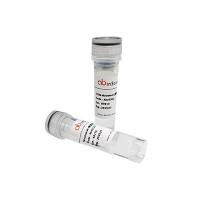Chick Chorioallantoic Membrane (CAM) Assay
互联网
CAM ASSAY
Shell-less embryo culture
Fertilized white leghorn chicken eggs (SPAFAS Inc., Norwich, CT) were received at day 0 and
incubated for 3 days at 37°C with constant humidity. On day 3, eggs were rinsed with 70% ethanol and
opened into 100 mm2 tissue culture coated Petri dishes under aseptic conditions. The embryos were then
returned to a humidified 38°C incubator2 for 7-9 additional days.
Mesh assay
Substrates
Vitrogen (Collagen Biomaterials, Palo Alto, CA) was diluted to a concentration of 1.46 mg/ml with
an equal volume of DMEM (HEPES buffer, no phenol red, GIBCO BRL, Gaithersberg, MD). This 1:1 mixture
made up half of the total volume to be pipetted onto the mesh (final concentration = 0.73 mg/ml). Matrigel
(Becton Dickinson, Bedford, MA) was diluted to a final concentration of 10 mg/ml with DMEM and directly
pipetted onto meshes. Nylon mesh with 250 μm2 openings were cut into 4 mm x 4 mm squares and
autoclaved. In preparation for polymerization, meshes were placed, under aseptic conditions, onto a nonbinding
surface (i.e., bacteriological Petri dish). The polymerization conditions for each substrate were
identical; after mixing the growth factors and/or compounds, 40 μl were pipetted onto each mesh in a
bacteriological Petri dish as described above. The Petri dish was placed in a humidified 37°C incubator with
5% CO2 for 30 minutes to allow polymerization followed by an incubation at 4°C for 2 hours.
Growth Factors
VPF/VEGF165 (Peprotech, Rocky Hill, NJ) was resuspended at 100 ng/μl in HBSS (Sigma, St.
Louis, MO). For each mesh containing VPF/VEGF, 250 μg was used.
Placement of meshes
In a tissue culture enclosure, meshes were placed onto the periphery of the CAM of a day 12-14
embryo, excluding areas containing major vessels. The embryos were then returned to the humidified 38°C
incubator with 3% CO2 for 24 to 48 additional hours.
Visualization of vessels
Embryos were removed from the incubator and meshes were viewed under a dissecting
microscope for gross evaluation. For injection, borosilicate glass capillaries (OD 1.0 mm, ID 0.75 mm; Sutter
Instrument Company, Novato, CA) were prepared with P-87 micropipette puller (Sutter Instrument
Company). Needles were connected with Tygon tubing (ID 1/32", OD 3/32", wall 1/32") to a 3cc syringe
with a 20-gauge needle. The syringe was attached to an infusion pump (Harvard Apparatus, South Natick,
MA). Injection of 400 μl FITC dextran, MW 2,000,000 (Sigma, St. Louis, MO), into the umbilical vein was
performed at a rate of 200 μl per minute. The FITC dextran was allowed to circulate for 5 minutes and 3.7%
formaldehyde in PBS was applied directly on each mesh. The embryos were then incubated at 4°C for 5
minutes and the meshes were dissected off the CAM and fixed in 3.7% formaldehyde for 10 minutes to
overnight.
Quantification of vessels
After fixation, meshes were mounted on slides with 90% glycerol in 1 X PBS and visualized on an
inverted fluorescence microscope. A Nikon Diaphot with a Sony DXC-151A camera attached to the side
port was used for capture of images, which were transferred to a Power Macintosh 7100/66AV. NIH Image
1.61 (public domain program available on the Internet at http://rsb.info.nih.gov/nih-image/) was used to
capture and analyze images. For each mesh, 5 random staggered images (approximately 600 μm each) were
captured using "Capture Frames," followed by "Make Montage" in order to display all of the frames at once.
The areas of high intensity were highlighted using "Density Slice" with (LUT selected at 105) and measured
using the "Measure" function. When density slicing is used in an image, the "Measure" function calculates
the areas of highlighted pixels.








